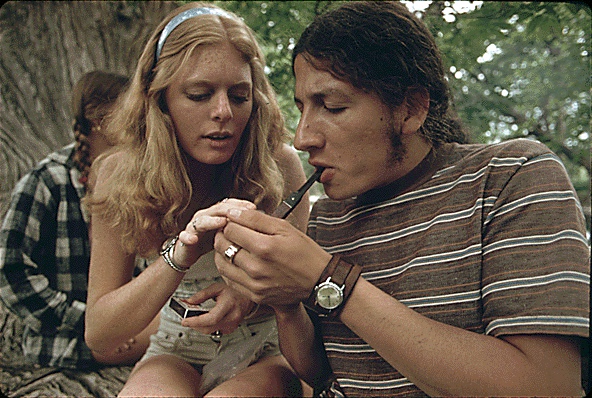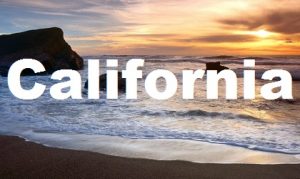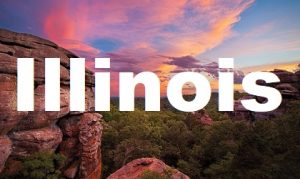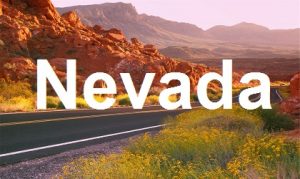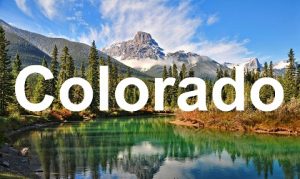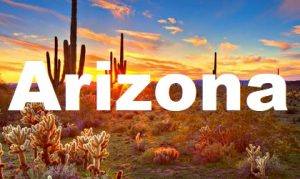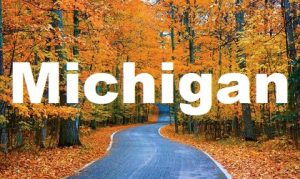Where did “420” come from? How did it become the universally accepted code for smoking weed? When did it start? The incredible stoner story behind 420.
It’s coming, like it does every year. The one, the only — 420.
On April 20, cannabis connoisseurs and devotees from the around the planet will spark it up, puff-puff-pass, rip a bong, burn one down, wake n’ bake, and share a spliff. Not that weed smokers don’t do this any other time of the year. There’s just something inherently different and maybe even a bit more reverent about smoking on this day in April.
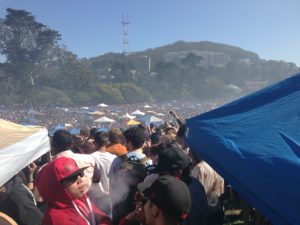
420 Celebration, Golden Gate Park, 2013
On this day, many of us will gather in cities and towns, in parks, houses, apartments, dorm rooms, cars, dispensaries, and just about anywhere we can to celebrate our favorite lady, Mary Jane.
There will be smoke and smiles. There will be snacks. And, with the current political climate, there might even be some talk of politics. But the main event will be the love vibe for a special plant that we have come to know as marijuana.
But why do we do this on 4/20? What is this phenomenon and how did it ever get started? Roll one up, sit back, and read on to find out how a three-digit number came together to form an unspoken code of honor for weed lovers all around the world.
Some kids called ‘the Waldos’
It was 1971, and there was a small group of high school kids in San Rafael, California, who would hang out at a certain wall outside of school, talking, goofing off, joking with one another, and making their plans to find some weed. Eventually, their time spent by that wall would lead to their nickname, “the Waldos.”
Soon, high fives and, “Hey, Waldos!” were common in their high school hallways.
And so, the story begins…
Why 420?
One day, one of the Waldos was handed a “treasure map.” This didn’t lead to a chest of gold, but to a bunch of marijuana plants that were growing secretly somewhere on the Point Reyes Peninsula.
”Waldo Steve” was given the map by a friend of his who had a brother in the U.S. Coast Guard who was, apparently, growing marijuana in this undisclosed location. It just so happened that this military man was a bit paranoid about getting caught, and so he gave permission for the plants to be harvested, drew a map, and handed it over to his buddy.
Once they got the map, they hatched a plan to find the hidden cannabis crop. Since some of the Waldos were on the school sports teams, they needed to pick a time to meet after practice, which ran about an hour after classes ended. And here we come to the reason 420 is 420:
The Waldos – five teenagers from San Rafael, California – decided to meet at the statue of Louis Pasteur on their high school campus in 1971 at 4:20 p.m. to smoke weed and hunt for a hidden marijuana field. THAT was the beginning of 420.

Some of the Waldos, circa 1972
They met, burned one down, hopped in the car, and set out on an adventure to find the elusive plants.
As the story goes, they had a great day driving out to the coast, laughing and hanging out. They would go on this hunt for the plants week after week, always meeting at 4:20. Chalk it up to high adventures with friends or just a bad sense of direction and a terrible hand-drawn map, but the Waldos never found that crop.
What they did do was something much more validating and life changing; they coined the phrase ”420,” which lives on to this day. At first, the Waldos would use the phrase ”420 Louie” as their code for getting high by the statue.
After a while, they cut out ”Louie” and simply used ”420” as a code word for cannabis. It was like a private joke, but boy did it catch on. Soon after, everyone in their high school who was “in the know” added “420” to their slang vocabulary and used it regularly.
They have the proof
These days, the Waldos have their own website which tells their full story of the origin of 420 and their proof that they started it all.
Some of their evidence includes:
- Handwritten, postmarked letters from friends referring to 420. One even says, “P.S. A little 420 enclosed for your weekend.”
- A 420 flag, made by a friend with a large marijuana leaf, a bright yellow rising sun, and a huge number 420.
- The San Rafael High School newspaper had a column that ran called ”Question Man.” In one issue from the early 70s, the weekly column had a question that one of the Waldos answered with a simple answer, “420.”
High school slang becomes a worldwide term
So, how did an inside joke among a small group of Northern California teenagers become the accepted term for marijuana around the globe?
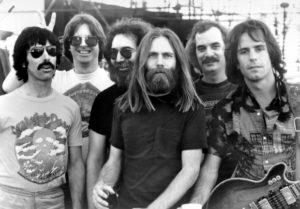
The Grateful Dead
One of the Waldo’s fathers handled real estate for the Grateful Dead. Another’s brother was good friends with Dead bassist Phil Lesh and managed his side bands. As a result of that, the Waldos spent time hanging out at the Dead’s San Rafael practice space.
When the Dead went on tour locally, the Waldos would head backstage and hang out while the show was happening. They would use the term “420” all the time, and soon it worked its way into the vocabulary of the Grateful Dead community.
As the band toured all over the world, “420” spread with them.
The late 1980s is when “420” really started to spread into the worldwide weed culture. Fliers were circulated at Grateful Dead shows explaining the number as a code for the stoner culture and that 420 was California police code for “marijuana smoking in progress”. Although untrue, this was the accepted rumor of the meaning of 420 for many years.
High Times magazine started using the term around that time in the late 80s, not knowing the true Waldos origin, but igniting the widespread use of 420 outside of the Grateful Dead community.
In 1997, the Waldos contacted High Times to set the record straight. The magazine then did a piece on the Waldos in a 1998 issue about “a group of guys who claim to be the originators of 420.”
The rest, as they say, is history. The Waldos are now widely accepted as the founders of 420.
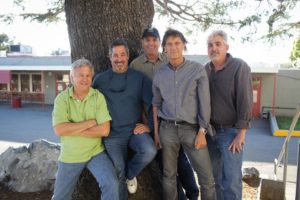
The Waldos today
So, on April 20, when you get ready to spark up a fatty, rip a bowl, or hit the bong, take a minute to appreciate just how cool, fun, and silly the roots of our counterculture vocabulary words truly are. And when you’re in the circle of friends, passing the joint around, you can tell them the story of 420 and the Waldos.

